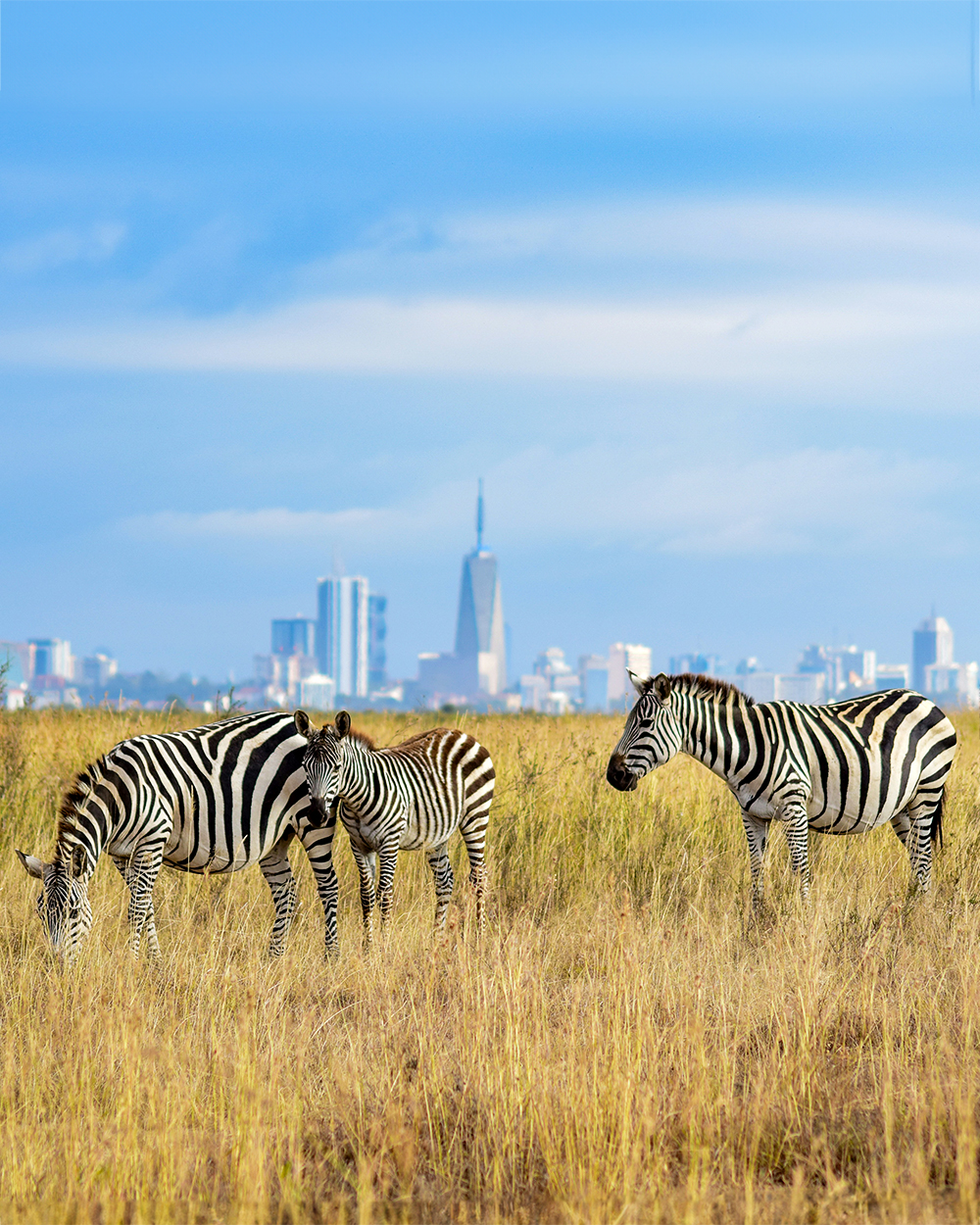
Where Modernity Meets Wilderness – Nairobi buzzes with energy, innovation, and a spirit of transformation. Kenya's capital offers an eclectic mix of modern skyscrapers, sprawling green spaces, and cultural heritage sites. It's a city where you can have breakfast at a chic cafe and spend the afternoon encountering giraffes and rhinos at the world-famous Nairobi National Park.
Start PlanningThe Kenyan Shilling (KES) is the local currency, but US dollars are widely accepted in tourist areas.
1,795 meters (5,889 feet) above sea level
Average temperatures ranging from 12°C (54°F) to 25°C (77°F)
4.7 million
Nairobi is generally safe for tourists, but as in any major city, visitors should be cautious of their surroundings, especially in crowded places.
Nairobi National Park: Just a short drive from the city's center, this unique wildlife park offers the chance to see lions, giraffes, zebras, and more against the backdrop of city skyscrapers.
David Sheldrick Wildlife Trust: A renowned rehabilitation center for orphaned elephants and rhinos, offering visitors a chance to learn about conservation efforts.
Giraffe Centre: Here, visitors can come face-to-face with endangered Rothschild's giraffes in a conservation and breeding center.
Karen Blixen Museum: The former home of the famous author of "Out of Africa," offering insights into her life and times in Kenya.
Maasai Markets: A vibrant and colorful outdoor market where local artisans sell traditional crafts, jewelry, and fabrics.
Peak Season: The dry months from June to September and January to February are the most popular for visiting, as the weather is favorable and the mid-year period coincides with the migration season in the Masai Mara.
Off-Peak Season: The rainy seasons from March to May and October to December see fewer tourists, which can mean less crowded visits to key attractions.
Kenya has introduced an Electronic Travel Authorization (ETA) requirement for foreign travelers, which replaced traditional visa requirements starting January 2024. Travelers must apply for the ETA online prior to their arrival in Kenya.
A Yellow Fever vaccination is required if traveling from a country with a risk of Yellow Fever.
Jomo Kenyatta International Airport (JKIA) is the primary gateway, located about 15 km southeast of the city center. It is one of the busiest airports in Africa, offering numerous international and domestic flights. Additionally, Wilson Airport, located closer to the central business district, handles domestic and regional flights, making it a convenient choice for connecting to national parks and other Kenyan cities.
Most resorts offer wireless internet connections, as do airports. For maximum connectivity throughout your trip, consider purchasing a local SIM card at the international airport upon arrival.
Safaricom offers the best coverage in Kenya, especially in national parks and rural areas.
The ideal duration for a stay in Nairobi depends on your interests and travel plans. Generally, 2 to 3 nights are sufficient to explore the main attractions, including the David Sheldrick Wildlife Trust, the Giraffe Centre, and local cultural experiences. If you plan to take day trips to nearby attractions like Nairobi National Park or Lake Naivasha, consider extending your stay to 4 to 5 nights to fully appreciate all that Nairobi and its surroundings have to offer.
Getting around Nairobi is convenient with various options:
Private Transfers: Many luxury hotels and tour operators offer private transfer services.
Ride-hailing Apps: Services like Uber are widely available.
Chauffeur Services: For a more exclusive experience, consider hiring a chauffeur-driven car.
It's important to carry enough cash, as many lodges and camps do not have facilities for tipping with credit cards and might not have enough cash for change.
A common practice is to tip $10-$15 per guest, per day. This usually goes into a communal tip box and is shared among all the lodge or camp staff, including those working behind the scenes.
For individuals who guide you through your safari (guides and trackers), a typical tip is about $10-$20 per person, per day.
At restaurants, tipping about 10% of the bill is customary.
Always ensure that your tips are given as a token of appreciation for good service, rather than out of obligation.
Drones are prohibited unless you have obtained a specific permit. Customs conducts scans of all bags upon arrival and will confiscate any drones, holding them until your departure day.